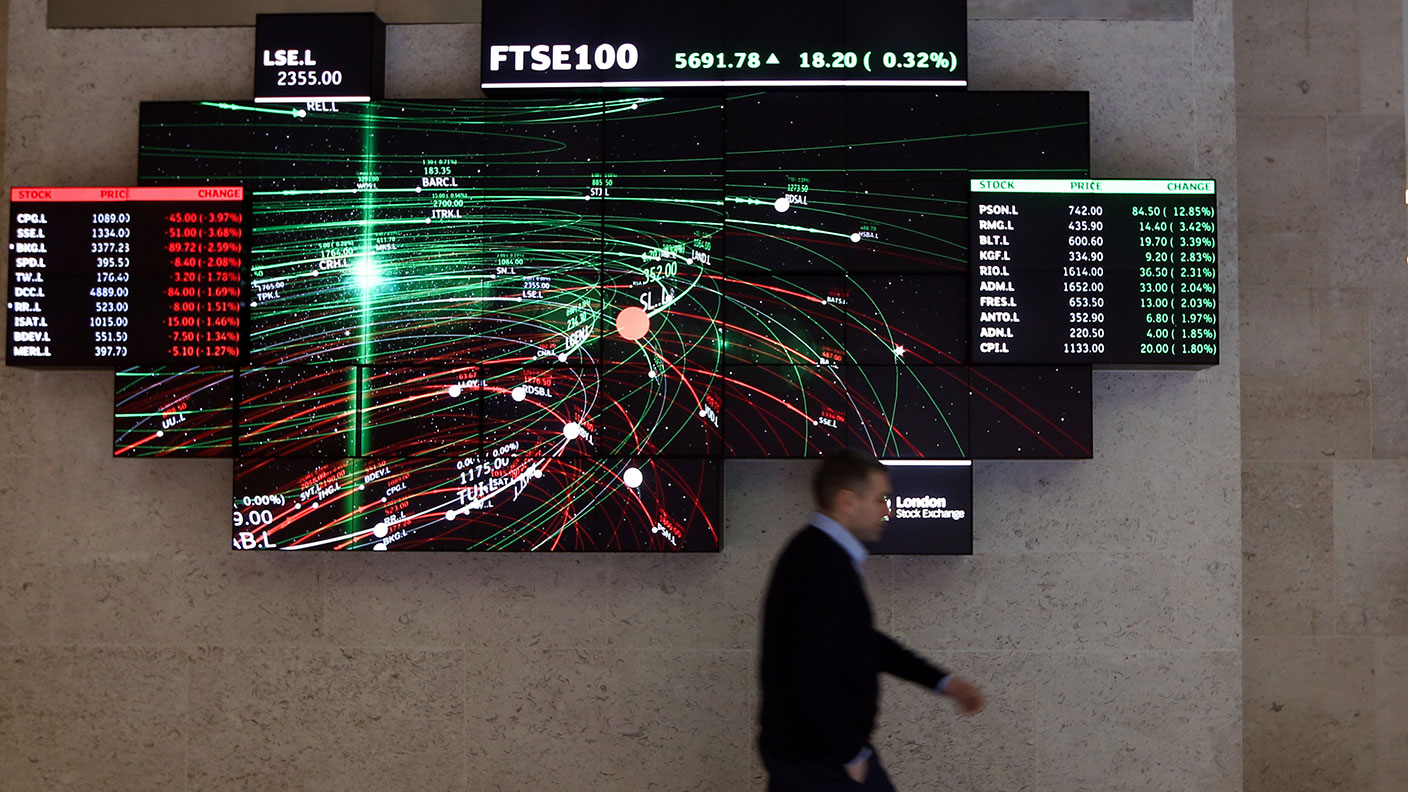This contrarian indicator suggests the market has further to rise
Sentiment among fund managers is overwhelmingly bearish – nearly 70% believe recent gains are just a bear market rally. That could be the most bullish sign of all, says John Stepek.


Before I get started – we’ve just put our 1,000th issue to bed! It’s out tomorrow! Subscribe now if you don’t already! First six issues completely free! And a free ebook as well!
OK. That’s my quota of exclamation marks used up for the next 1,000 issues.
This morning I want to look at contrarian indicators and one in particular that I’m a fan of.
MoneyWeek
Subscribe to MoneyWeek today and get your first six magazine issues absolutely FREE

Sign up to Money Morning
Don't miss the latest investment and personal finances news, market analysis, plus money-saving tips with our free twice-daily newsletter
Don't miss the latest investment and personal finances news, market analysis, plus money-saving tips with our free twice-daily newsletter
To cut a long story short, it suggests that despite the rapid rally we’ve seen so far, and despite the horrible economic news, there’s no reason to expect another big collapse in the immediate future.
Let’s look at that in more detail.
The logic behind contrarian thinking
Firstly, what’s the logic behind contrarian thinking? After all, just because lots of people think something will happen doesn’t mean that they’re wrong (indeed it’s basically the reason that we use markets – “the wisdom of crowds”). Going against the crowd in a simplistic, knee-jerk manner is in many situations a stupid – or even life-threatening – thing to do. So why consider it in markets?
OK, first we have to think – what do markets actually do? Markets are forward looking. They don’t price in what’s happening today. They price in what they think is likely to happen tomorrow, or further into the future. This is why a company’s shares usually take a dive when they issue a profit warning. Because it’s an unexpected nasty surprise. Or it’s why they rise when they unexpectedly beat expectations – it’s a pleasant surprise. The point is: it’s news that the market hadn’t priced in already.
So you can look at the market as, at any given moment, being positioned for one specific future. If and when things change, the market will move accordingly, to price in a different future.
Usually the market isn’t at all bad at this. Again – that’s why we use markets. If markets were terrible at sending out price signals then it would be pointless to have them. They’d be no better or worse than having one guy in an office somewhere dictating how many tractor parts the factories needed to produce that year.
As it is (and despite the best efforts of central banks thus far) they are a lot better at allocating resources than the central planning option, and so we stick with them.
The thing is though, markets are made up of human beings. Human beings are fallible and the future is unknowable. So, while the market is pretty good at pricing the future, it’s not perfect. Being the sum of collective human endeavour (yes, even the algos, at least so far) it’s also very prone to extremes of greed and fear.
When a market hits those extremes, it tends to be pricing in extreme scenarios. Like a world where a small chunk of land in Japan is worth more than the entire state of California, for example (to cite one nice line from the Japan bubble of the 1980s).
So the potential benefit of contrarian thinking is this: it’s not that you, the individual, know what’s going to happen in the future any better than the rest of the market does. You’re not that smart. I’m not that smart. No one is.
It’s more that it’s useful for you to be aware of when the market is pricing in a future that is highly unlikely. Because if the market is betting too heavily on an unlikely outcome, then there will be a significant correction when enough “real world” evidence stacks up to make this obvious to everyone involved.
(If you’re interested in all this stuff by the way, I wrote a book about it called The Sceptical Investor – you can buy it on Amazon here.)
Fund managers are really rather gloomy
So this is why I like to look at various indicators that point to how market participants are feeling, and what the “common knowledge” of the day is.
Let me warn you now that a lot of this is “gut” feeling. It’s like the “cover story” indicator – whereby a magazine or newspaper cover has such an obviously bullish or bearish cover, that it’s clear that there’s too much euphoria or panic around.
But other indicators are a bit more scientific. Probably my favourite measure of sentiment is the monthly Bank of America global fund manager survey. This looks at where fund managers around the world claim to be putting their money.
If positioning gets extreme, then it often pays to do the opposite. (Again, this is not because you know better than the fund managers. It’s for the simple reason that if every fund manager in the world has bought into a stock, there’s no one left to buy – an extreme example, but that’s roughly how this works).
So how do fund managers feel right now?
Well, the answer is “pretty damn bearish”. According to the latest survey for May, one in ten fund managers expects a V-shaped recovery. Nearly 70% reckon this is a bear market rally.
They’ve got about 5.7% of their assets in cash, which is very high by historical standards (the ten-year average is 4.7% and, for perspective, cash balances were about 5.5% at the peak of 2008 financial crisis pessimism).
Another point of interest – apparently the managers also haven’t been this bearish on value stocks relative to growth stocks since December 2007 (which was roughly when value’s last brief period of dominance kicked off).
That suggests to me that, where they are in the market, they’re heavily invested in the “best” stocks – ones like Amazon, the stocks that you won’t get fired (by your clients or your boss) for owning.
Does any of this mean that the market is cheap? Not at all. Does it mean that there’s scope for it to go higher? Yes it does. In fact, the longer it goes on for, the more likely it is that these investors panic and try to pile in, looking for riskier assets with the potential to go higher and help them to catch up on all the potential gains they’ve already missed.
What does that mean for you? As always, you don’t need to worry. Just stick to your plan (and get one if you don’t have one). However, it is useful to know that despite the solid rise in markets since late March, there is still a lot of bearishness about. That implies that we’re nowhere near the point where we have to brace for another big collapse.
And don’t forget to subscribe!
Get the latest financial news, insights and expert analysis from our award-winning MoneyWeek team, to help you understand what really matters when it comes to your finances.
John Stepek is a senior reporter at Bloomberg News and a former editor of MoneyWeek magazine. He graduated from Strathclyde University with a degree in psychology in 1996 and has always been fascinated by the gap between the way the market works in theory and the way it works in practice, and by how our deep-rooted instincts work against our best interests as investors.
He started out in journalism by writing articles about the specific business challenges facing family firms. In 2003, he took a job on the finance desk of Teletext, where he spent two years covering the markets and breaking financial news.
His work has been published in Families in Business, Shares magazine, Spear's Magazine, The Sunday Times, and The Spectator among others. He has also appeared as an expert commentator on BBC Radio 4's Today programme, BBC Radio Scotland, Newsnight, Daily Politics and Bloomberg. His first book, on contrarian investing, The Sceptical Investor, was released in March 2019. You can follow John on Twitter at @john_stepek.
-
 Rightmove: Asking prices set to rise 2% in 2026 after post-Budget market rebound
Rightmove: Asking prices set to rise 2% in 2026 after post-Budget market reboundBuyers and sellers who held off in anticipation of the Budget will come back to the market and contribute to asking prices increasing next year, according to Rightmove
-
 Coreweave is on borrowed time
Coreweave is on borrowed timeAI infrastructure firm Coreweave is heading for trouble and is absurdly pricey, says Matthew Partridge
-
 Halifax: House price slump continues as prices slide for the sixth consecutive month
Halifax: House price slump continues as prices slide for the sixth consecutive monthUK house prices fell again in September as buyers returned, but the slowdown was not as fast as anticipated, latest Halifax data shows. Where are house prices falling the most?
-
 Rents hit a record high - but is the opportunity for buy-to-let investors still strong?
Rents hit a record high - but is the opportunity for buy-to-let investors still strong?UK rent prices have hit a record high with the average hitting over £1,200 a month says Rightmove. Are there still opportunities in buy-to-let?
-
 Pension savers turn to gold investments
Pension savers turn to gold investmentsInvestors are racing to buy gold to protect their pensions from a stock market correction and high inflation, experts say
-
 Where to find the best returns from student accommodation
Where to find the best returns from student accommodationStudent accommodation can be a lucrative investment if you know where to look.
-
 The world’s best bargain stocks
The world’s best bargain stocksSearching for bargain stocks with Alec Cutler of the Orbis Global Balanced Fund, who tells Andrew Van Sickle which sectors are being overlooked.
-
 Revealed: the cheapest cities to own a home in Britain
Revealed: the cheapest cities to own a home in BritainNew research reveals the cheapest cities to own a home, taking account of mortgage payments, utility bills and council tax
-
 UK recession: How to protect your portfolio
UK recession: How to protect your portfolioAs the UK recession is confirmed, we look at ways to protect your wealth.
-
 Buy-to-let returns fall 59% amid higher mortgage rates
Buy-to-let returns fall 59% amid higher mortgage ratesBuy-to-let returns are slumping as the cost of borrowing spirals.
